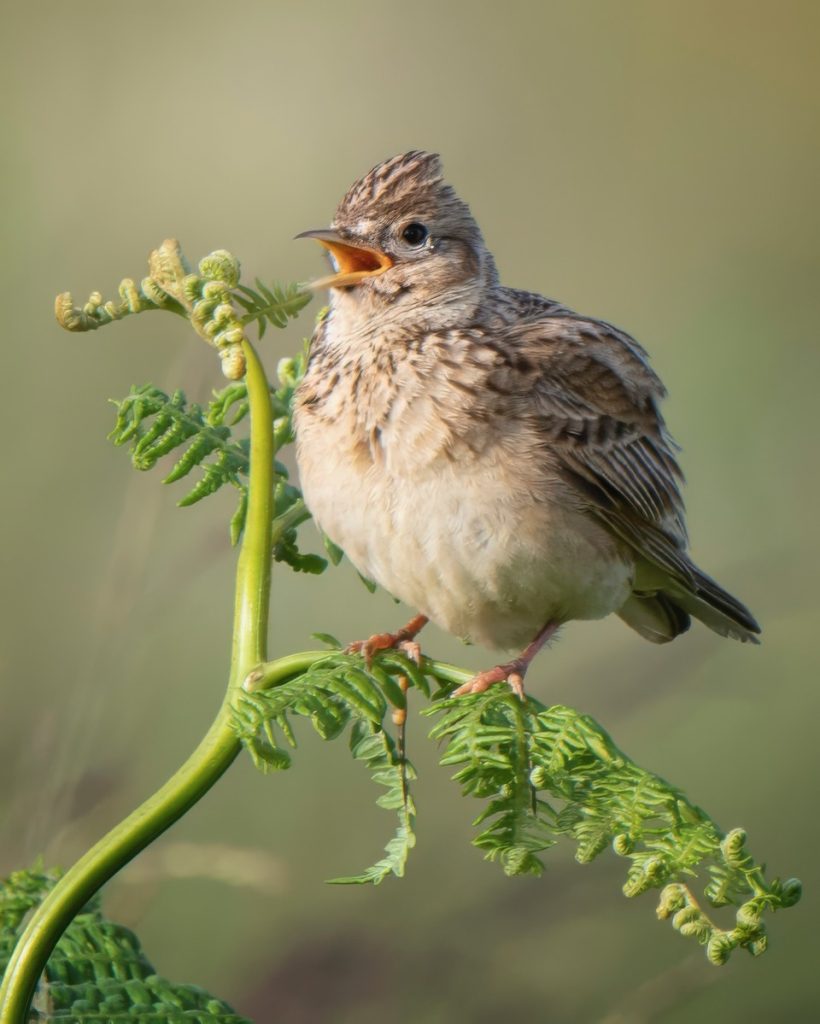SKYLARKS IN BUSHY PARK

Photo by Sue Lindenberg
Top five things to know about the soulful skylark
The beloved skylark can be found in two of our largest Royal parks – Bushy and Richmond Parks.
This small but mighty bird has inspired many a poet, including William Wordsworth and Geoffrey Chaucer.
Read on to find out more about this fascinating bird and how we can all play our part in protecting it.
- A collection of skylarks is called an exhalation
An exhalation of skylarks is used to describe a group of skylarks that are gathered together in one place, usually when they are singing or nesting. Other terms for a collective of skylarks include a bevy, descent or hover.
In the English dictionary, exhalation also refers to a ‘feeling of intense well-being or exhilaration’, which a skylark’s song flight has been known to evoke.
- They don’t just sing, they perform
Their vocals have inspired works of literature and music, but they also like to captivate with their aerial skills.
A male skylark will begin his song flight by soaring up from the ground, hovering for several minutes whilst pouring out an unbroken stream of melodic song, and then finish by parachuting down. Song flights of up to one hour have been recorded with birds reaching up to 1,000 feet before descending. This performance is one of nature’s greatest spectacles.
- Skylarks are monogamous during the breeding season and can raise up to three broods per year.
For each brood they can lay to three or four eggs, and chicks can become independent after a mere two weeks.
Skylarks feed on seeds, plant matter and insects. When feeding their young however they prefer high protein insects to seeds.
- The population of skylarks is in freefall
Compared to 40 years ago, skylark populations across the UK have declined by around 75 per cent according to The Royal Society for the Protection of Birds (RSPB). As a result, they are on the RSPB’s red list species of concern.
In Richmond and Bushy Parks, we have also witnessed this rapid population decline, in part due to dogs disturbing nests and rising visitor numbers.
- They make their nests on the ground, not in trees
Skylarks make their nests on the ground which makes their nests more vulnerable to disturbance. Because of this we ask that dogs walkers observe the rules for skylark protection zones in both parks and stick to paths.
Bushy Park: Dogs must be kept on a short lead in skylark protection zones from March-September.
- Grassland to the south of Oval Plantation and west of Hampton Wick Cricket Ground
Richmond Park: Dogs must be kept on a short lead in skylark protection zones all year round.
- Lawn Field (by Pen Ponds)
- Crown Field (between the sports pitches and Bone Copse)
- The Bog (between Bog Gate and Sheen Gate)
The reason we ask that this is observed all year around in Richmond Park, a National Nature Reserve, is for the benefit of overwintering skylarks and other important bird species which overwinter and/or nest in these areas, including reed bunting, stonechat, and snipe.
